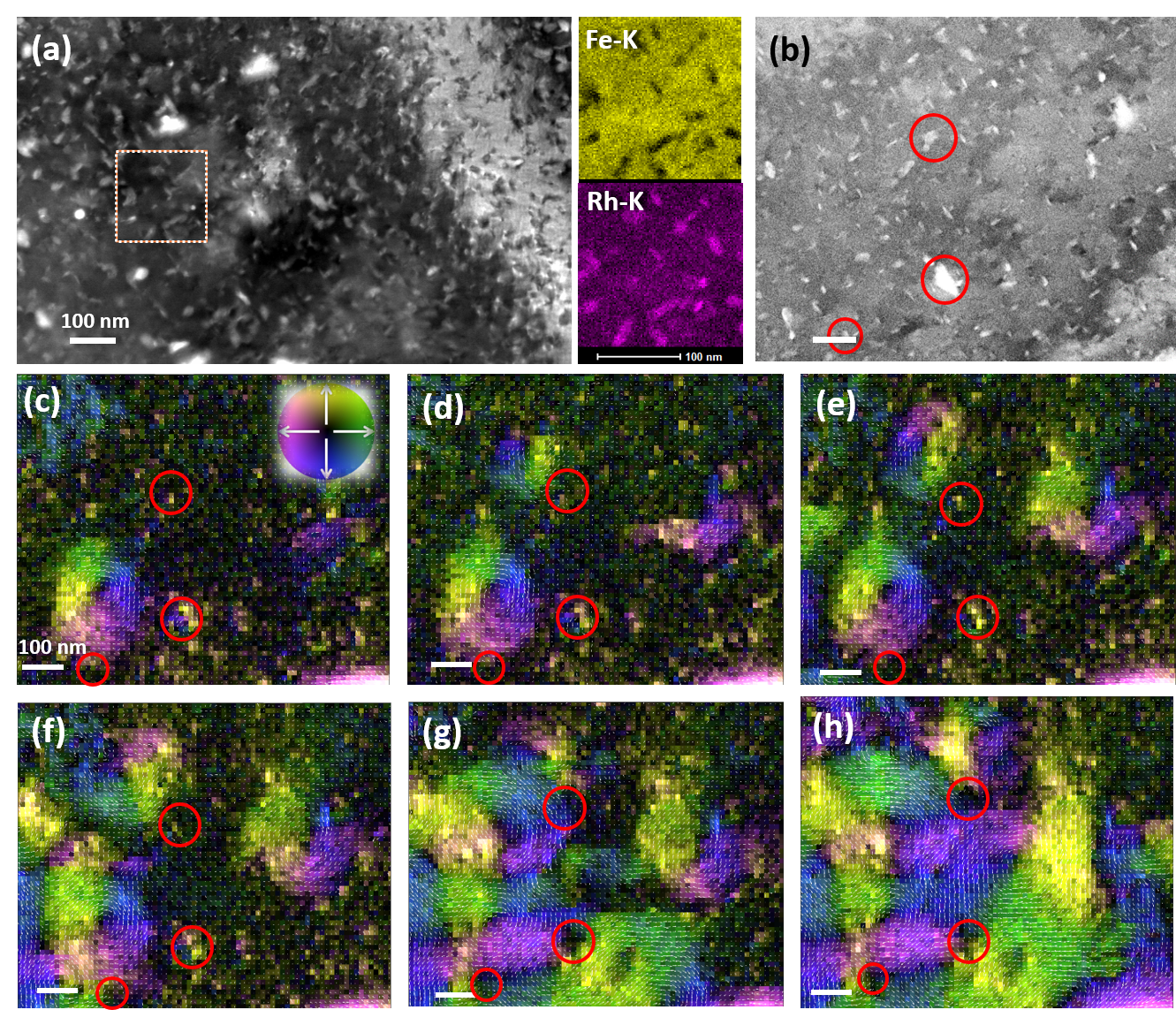STEM-DPC
Nanometer (nm) or even sub-nm resolution is often critical, e.g. to understand magnetic correlation between nanoparticles, investigating the magnetic domain fine structure in nanostructured thin films, and in general to understand vortex structures and Skyrmions. Differential phase contrast (DPC) implemented in the field-free mode of a scanning transmission electron microscope (STEM) is one of the most effective tools to quantitatively map magnetic structures at the nanoscale. It images the magnetic field by measuring the phase gradient based on the displacment of the primary beam in STEM mode transmitted through sample and affected by the Lorentz force (Figure 1).

Figure 1. (a) schematic diagram showing the principle of magnetic imaging in STEM. (b) typical diffraction disks from two domains with different magnetizations and their comparison by subtracting one from another, the black arrow points the deflection of the electron beam caused by Lorentz force. (d) A typical magnetic induction (magnetization) map of FeRh film by using the DPC approach (registering the mass center of 4D STEM data). The color and brightness represent the measured field direction and strength respectively, summarized by the inserted color wheel at top right.
Using a state-of-the-art pixelated detector, it is posible to record STEM-DPC maps with high time resolution of a few seconds per image. This approach has been used for in-situ STEM DPC measurements, e.g. follow the transisition from the antiferromagnetic to ferromagnetic state in FeRh during heating. Figure 2 shows how the magnetic domains evolve in the sample during the magnetic transition.

Figure 2: Imaging the antiferromagnetic to ferromagnetic transition in a FeRh thin film. a) HAADF-STEM/EDX image with some Rh rich precipitates visible, b) HAADF-STEM reference image, c-h) STEM-DPC image with increasing temperature shoing the formation of magnetic domains incl. several vortex structures, related to the precipitates.

